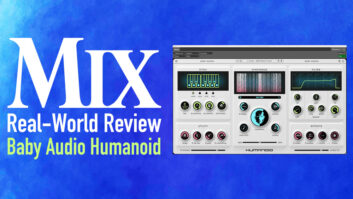Try One of These When You’re Out of Ideas
The basic Drawmer noise gate has a feature called “Listen To Key.” This lets you listen to the effect of the high and low pass filter on the gate sidechain. But you can use this feature to actually print audio, and the filters are very effective.
Hammering bass strings: Need to punch up a chorus that isn’t hitting hard enough? Lay an electric bass on its back, frett a note, strike the string using a small hammer (not hard enough to damage the instrument!). This can give you an amazing tone.
Offsetting solos: This is a great move for DAW productions. If your chord structure allows it, try shifting a solo ahead or behind by anything from an 1/8th note to a full measure. This can turn something mundane into a line of harmonic genius. Be sure to listen for any bad notes you may create!
Wood baffle resonance. Instead of the normal padded baffles, make some reflective ones using wood. Try placing the baffles around a drum kit. Positioned exactly parallel, those dreaded “flutter” echoes can add resonance that might beef up your snare tone nicely.
Horn against mic: Looking for a really fat muted trumpet tone? Take a cardioid dynamic mic, place a thick foam filter over it and have your musician physically press the bell of his horn against the foam. The amount of added low end is amazing. A plus is that the mic to instrument distance remains constant, decreasing the need for leveling in the mix.
Stem mixing: Need a new sound? Try stem mixing and completely change your tones. Set up four stereo stem busses; let’s call them A,B,C, and D, and assign them to your main stereo mix bus. Now lift all your drum and bass tracks from the stereo buss, and send them to buss A. Process Buss A with a stereo compressor that’s great for drums/ Do the same with Buss B (instruments), C (Lead vocals), and D (Backing Vocals). By tailoring each stem buss with sympathetic processing, your mix will really shine.
Punch gating and sequencing. (Thanks to producer/engineer Gerry Brown!) Take a single note guitar, and pan it full left. Take a copy of the guitar, and pan it full right. Take the right side track, and gate it so only the loudest notes speak. This will accent certain notes, making the guitar more dynamic. This also works for sequences: make a copy of the track, and erase all notes below a certain velocity.
Altered strings: Guitar player in a rut? Take a guitar and put some strings on improperly. Use 2 low E strings, and two high E strings instead of the normal choices. Trade a G string for a B string; you get the idea. The altered tone and tuning possibilities will open up new creative possibilities.





